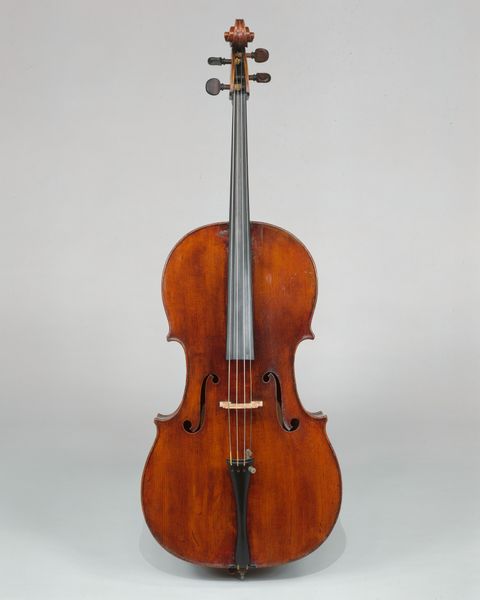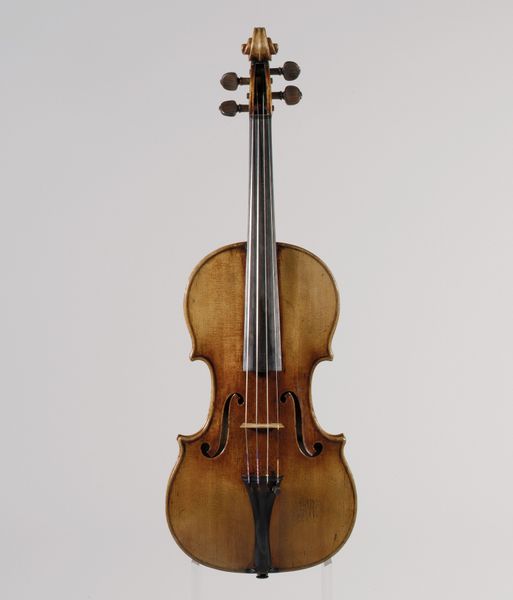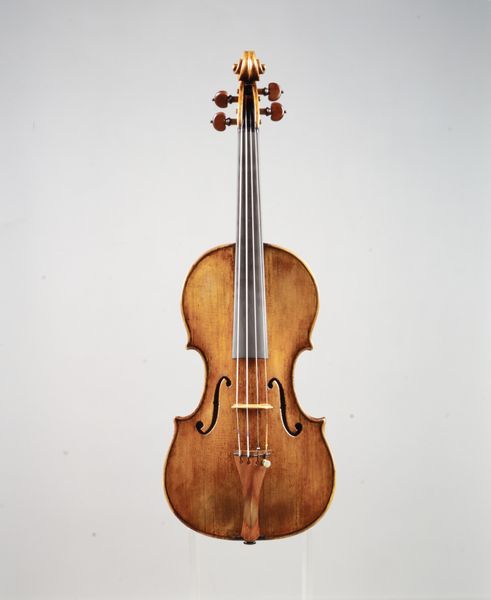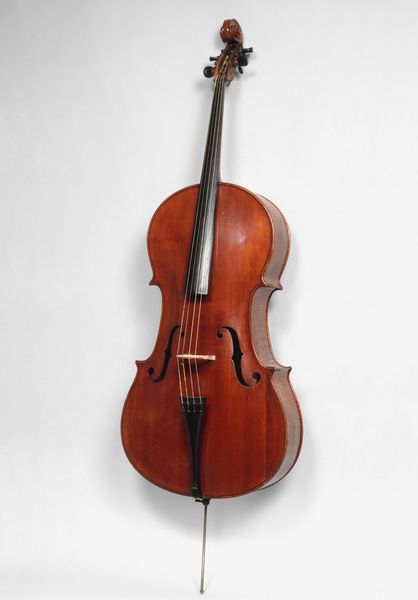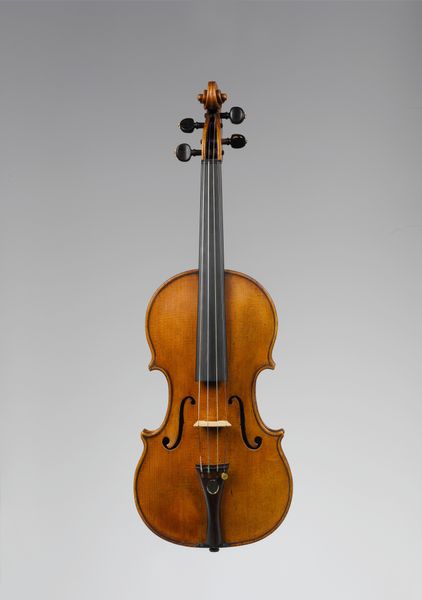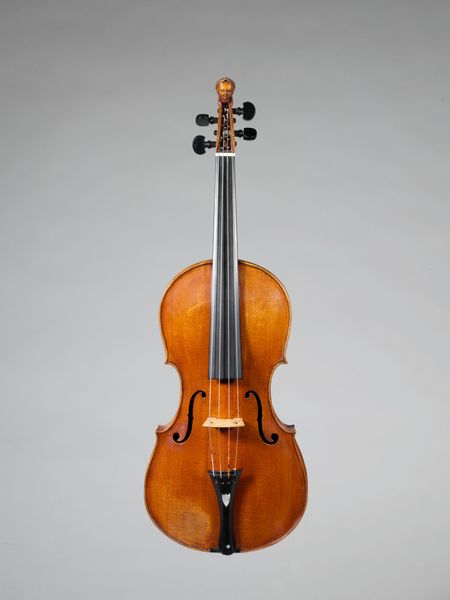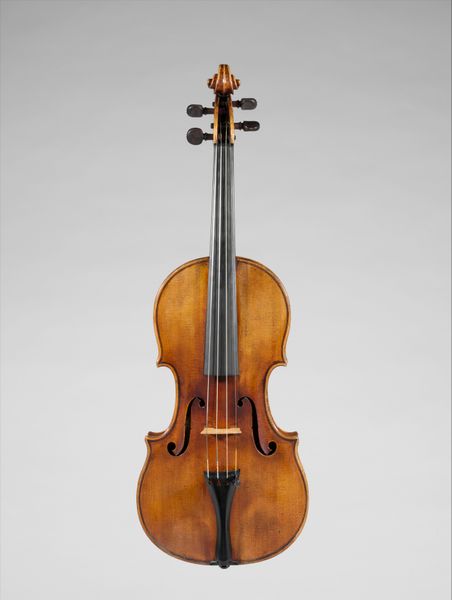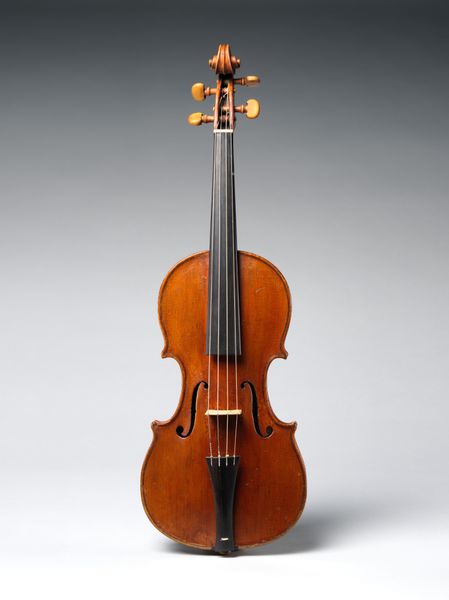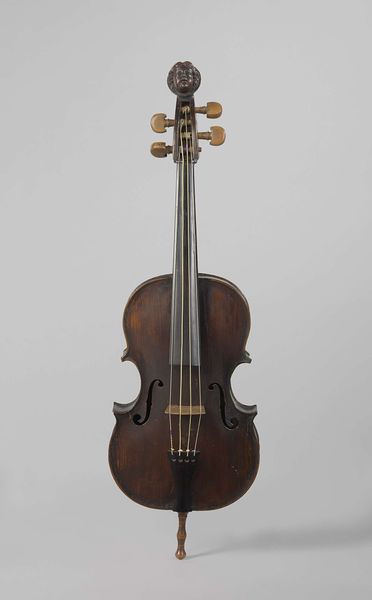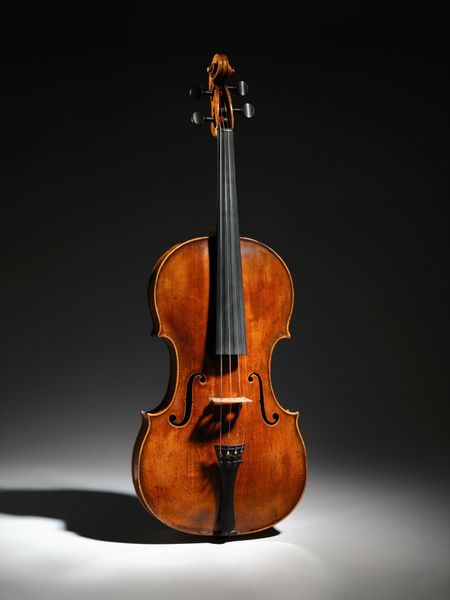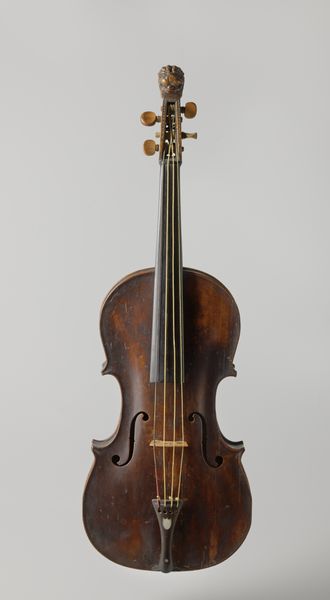
Dimensions: L. 121.8 cm (47-15/16 in.); Body L. 75.5 cm (29-11/16 in.); String L. 68.5 cm (26-15/16 in.)
Copyright: Public Domain
This is a violoncello made by François-Louis Pique in France in the late 18th or early 19th century, primarily from maple and spruce wood. The visual character of the instrument is directly related to its function. The carefully carved body, with its f-holes, isn't merely decorative. It’s designed to resonate with the strings, amplifying their sound. The long neck, topped with tuning pegs, allows for precise control over pitch. This object represents a moment of standardization of the craft of violin-making. Pique was known for his prolific workshop, suggesting a division of labor, where different craftspeople focused on specific aspects of the instrument. What we see is not just the work of a single artist, but a collaborative effort, each step reliant on skilled hands working in concert. Consider how this division of labor and craft has been historically undervalued as mere 'making'. The violoncello offers a challenge to traditional distinctions between fine art and craft.
Comments
No comments
Be the first to comment and join the conversation on the ultimate creative platform.
